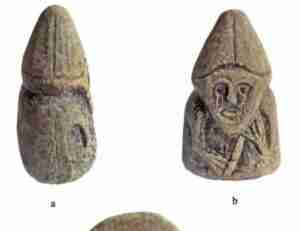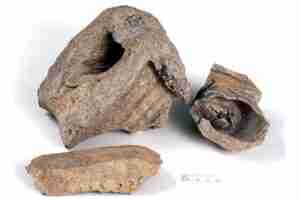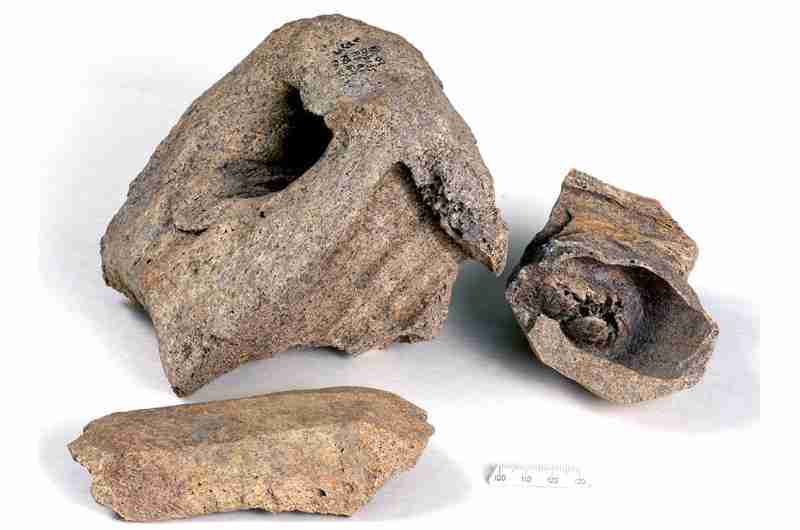
When excavations at 35 Spaska Street in Kjiv began in 2007, archaeologists didn’t have high hopes.
Two previous archaeological surveys had already been conducted in the area with modest success. However, seeing as construction was planned in the area, archaeologists had to first go over the site because it was historically significant.
“The excavations were considered more of a routine examination. No one dared to believe that we’d make as rich archaeological finds as we actually did.”
Natalia Khamaiko, an archaeologist at Ukraine’s National Academy of Sciences who led the team that conducted the excavations.
According to Khamaiko, to their surprise the archaeologists dug up layers spanning a variety of historical periods, with the best examples dating from the 10th century to the first part of the 13th century.
They discovered remnants of buildings as well as numerous other items, including glass, gold wire, and Hnefatafl game pieces, also known as Viking chess pieces.
A surprising discovery

Nine somewhat ill-defined bone fragments of varied sizes were found.
One of them, a very large bone, particularly stood out. The archaeologists set out to discover what animal it belonged to, sending them to zooarchaeologist Oleg Zhuravlyov.
He concluded that the bones come from walrus snouts.
“Walrus ivory was a very popular raw material in Europe in the Middle Ages. It was used to create the most exquisite objects in church art, but gradually also finer versions of everyday objects like game pieces and knife handles.”
James Barrett, an archaeologist and professor at the NTNU University Museum.
Where did the walrus ivory originate from?
“Written sources in Arabic from the Middle Ages say that so-called ‘fish teeth’—interpreted as walrus teeth—were traded throughout present-day Ukraine and Russia and used to make assorted objects, including sword shafts. Historical sources from Byzantium also suggest that people there imported walrus ivory from the same areas. We therefore assumed that these ivory artifacts came from walruses in the Barents Sea.”
James Barrett
To determine where the walrus bones in Kyiv originated, the researchers used a three-pronged strategy.
DNA Analysis of the Walrus Ivory
They started by looking at the bones’ archaeological DNA.
A genetic signature was present in five of the nine bone fragments, allowing the researchers to conclude with absolute certainty that they were from Greenland.
According to Barrett, walruses can be classified into two genetic groupings, one of which is unique to Greenland and the eastern regions of Canada and the other of which is widespread, including in Greenland.
Isotopic Study of the Walrus Bones
The bones were subsequently subjected to an isotopic study by researchers.
Isotopes are distinct forms of the same element that differ depending on the type of food and the region.
Preparation of the bones for sale
The researchers examined how the bones had been processed.
The walrus tusks were still fastened to a fragment of the snout bone when they were transported.
Due to their preference for resting their full body weight on their tusks, walruses have exceptionally robust muzzles. The muzzle was consequently “thinned” prior to export in order to make it simple to snap off the tusks. This technique was commonly used in Greenland.
“All the source materials point to the same source—Greenland—so this is a result we can trust.”
Bastiaan Star, an associate professor at the University of Oslo
Conclusions of the Archaeologists
“In the 12th century, Kyiv was a medieval metropolis and the capital of a state with an economy built on trade. Archaeological research shows that the largest amount of imported finds stem from the end of the 11th century and the 12th century.
What we’ve now discovered about the walrus bones shows that Kyiv was an unusually large trading centre, with goods flowing through from distant parts of the world.”
Natalia Khamaiko, an archaeologist at Ukraine’s National Academy of Sciences


